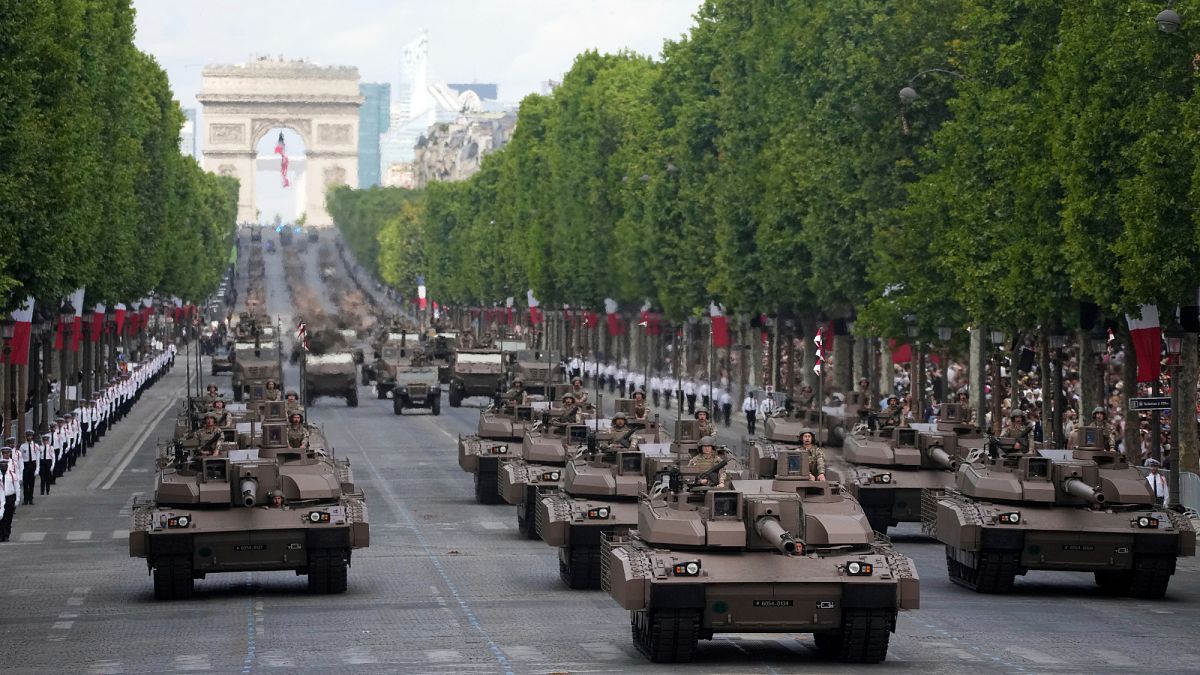On July 14, the streets of France erupted in a splendid display of national pride as citizens celebrated Bastille Day, a historic event marking the Storming of the Bastille in 1789 that ignited the French Revolution. This year’s festivities took center stage in Paris, where a grand military parade unfolded along the renowned Champs-Elysées. Approximately 7,000 participants took part, marching with resolve and vigor on foot, horseback, and in armored vehicles, showcasing France’s remarkable military prowess
Did You Know
Sea otters hold hands while sleeping to avoid drifting apart in the water.
?
AD
while embracing the country’s rich heritage.
The atmosphere was nothing short of electric, as warplanes roared overhead, executing thrilling aerial maneuvers that captivated spectators below. As night fell, the Eiffel Tower served as a focal point for an awe-inspiring drone light show, accompanied by a vibrant fireworks display that sparkled across the skies of nearly every French town. These visual marvels not only celebrated the day but also united the nation, drawing crowds together in shared joy and reflection on France’s enduring spirit.
This year, French Prime Minister Emmanuel Macron pledged to boost military spending during the festivities, underscoring the significance of national defense. His remarks resonated amid the celebratory backdrop, emphasizing the importance of unity and strength as France navigates its path forward. As the jubilant crowds soaked in the sights and sounds of their national holiday, it became clear that Bastille Day continues to be a powerful reminder of the values of liberty, equality, and fraternity that define the French spirit.
Q&A (Auto-generated by AI)
What is the history of Bastille Day?
Bastille Day, celebrated on July 14, commemorates the Storming of the Bastille in 1789, a pivotal event in the French Revolution. This fortress prison symbolized royal tyranny, and its capture marked the beginning of the people's uprising against the monarchy. The day is a national holiday in France, symbolizing liberty and the fight for democratic rights.
How do other countries celebrate national days?
National days around the world are often marked by parades, fireworks, and cultural festivities. For instance, the United States celebrates Independence Day on July 4 with fireworks and barbecues, while Canada Day on July 1 features similar celebrations. Each country incorporates unique traditions reflecting its history and culture, promoting national pride.
What are the key events of the French Revolution?
Key events of the French Revolution include the Estates-General meeting in 1789, the formation of the National Assembly, the Storming of the Bastille, and the Declaration of the Rights of Man and of the Citizen. The revolution led to the abolition of the monarchy, the rise of radical political factions, and ultimately, the establishment of the First French Republic.
Why is the Champs-Elysees significant?
The Champs-Elysees is one of the most famous avenues in Paris, symbolizing French elegance and culture. It serves as the route for the annual Bastille Day military parade, showcasing France's military strength and national pride. The avenue is lined with theaters, cafes, and shops, making it a central hub for both locals and tourists.
What role does military play in Bastille Day?
The military plays a central role in Bastille Day celebrations, with a grand parade on the Champs-Elysees featuring soldiers, vehicles, and aircraft. This display of military strength serves to honor the armed forces and reinforce national unity. Additionally, it reflects France's commitment to defense and security, particularly in light of contemporary global challenges.
















